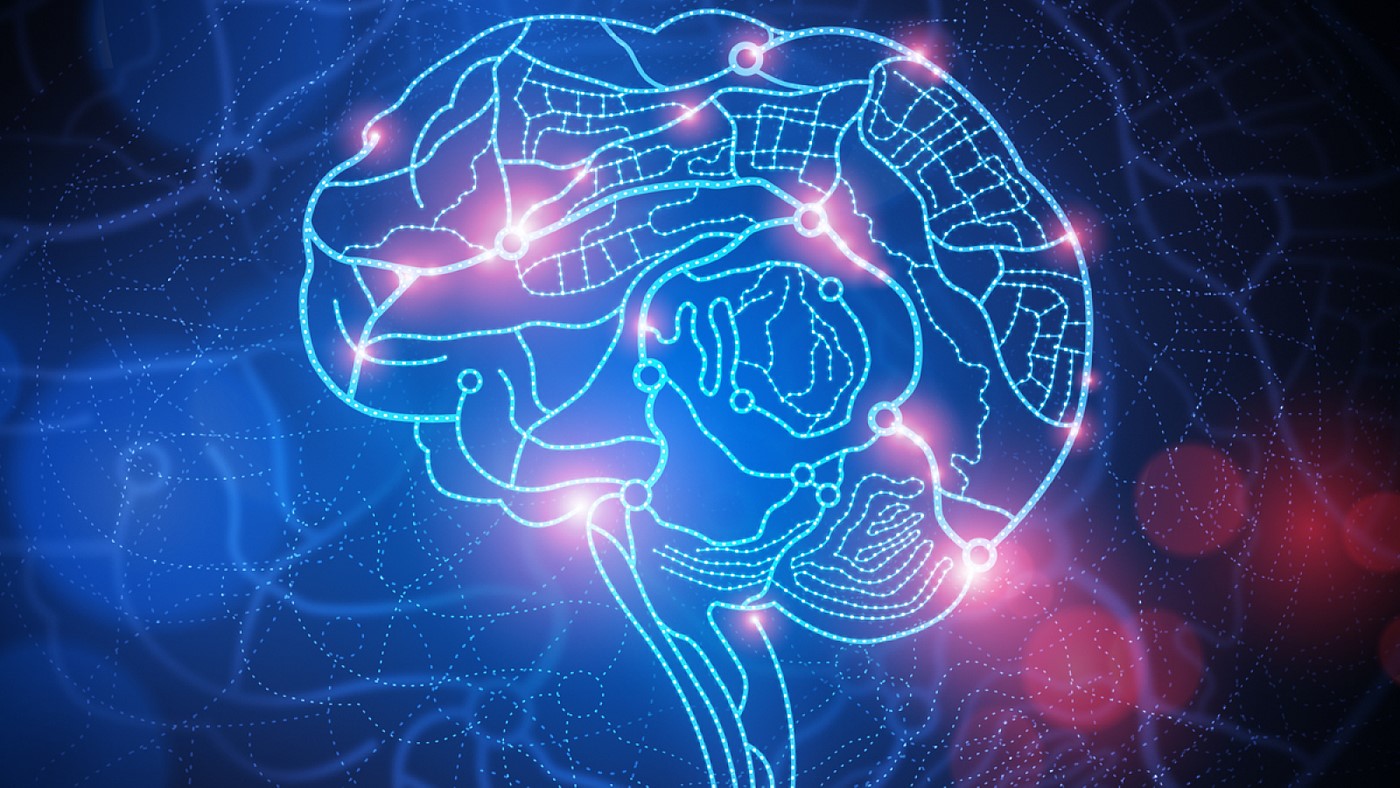It’s Not Really Them
The concept of uploading a loved one’s consciousness to gadgets may sound appealing in theory, but upon closer examination, it becomes clear that it raises significant ethical and philosophical concerns. The idea of preserving someone’s consciousness and transferring it to a digital format implies that the essence of who they are can be replicated and exist beyond their physical body. However, this raises the question: is it really them?
Our consciousness is not just a collection of memories and thoughts; it is shaped by our experiences, emotions, and interactions with the world around us. It is the product of a complex interplay between our biology, environment, and personal interactions. By attempting to upload someone’s consciousness, we are essentially trying to capture their entire being in a digital form. But can a digital copy ever truly capture the essence of a person? Can it replicate subtle nuances, unique perspectives, and the depth of human emotions?
Furthermore, consciousness is often seen as an emergent property of the brain’s complexity and neural connections. It is a product of the physical body and its intricacies. Even if we could somehow transfer their memories and thoughts to a digital format, it would merely be a replica, lacking the essential aspects that make up a person’s consciousness.
Additionally, the very act of uploading someone’s consciousness without their consent raises ethical questions. It is one thing to preserve memories or capture the essence of a person’s life, but it is quite another to delve into their consciousness, potentially violating their privacy and crossing boundaries that should be respected even after death.
In summary, the idea of uploading a loved one’s consciousness to gadgets may seem appealing on the surface, but it presents numerous ethical, philosophical, and practical challenges. It is essential to remember that a person’s consciousness is deeply intertwined with their physical body and the unique experiences that shaped them. Attempting to recreate their consciousness in a digital format not only raises questions about the authenticity of the replication but also challenges our understanding of what it truly means to be human.
Ethical Implications
The idea of uploading a loved one’s consciousness to gadgets raises a myriad of ethical concerns that must be carefully considered. One of the primary ethical issues revolves around consent. It is questionable whether someone can truly give their informed consent for the transfer of their consciousness after death or even during their lifetime. This raises concerns about the violation of individual autonomy and the potential for exploitation by those who seek to profit from such technologies.
Furthermore, the privacy of the deceased or the conscious entity living inside the gadget becomes a significant concern. What happens to the privacy rights of the individual whose consciousness is uploaded? Will their thoughts and memories be accessible to others without their consent? This raises questions about digital rights management, data ownership, and the potential for misuse or unauthorized access to sensitive personal information.
Another ethical dilemma arises from the potential for abuse or manipulation of the technology. What happens if the uploaded consciousness is altered or manipulated? Can someone else control or influence the thoughts and experiences of the individual? This opens up possibilities for undue influence, coercion, or unethical experiments that could potentially violate the rights and autonomy of the conscious entity.
Moreover, uploading consciousness to gadgets can disrupt the natural cycle of life and death. Death is an inevitable and necessary part of the human experience. By attempting to preserve someone’s consciousness indefinitely, we risk depriving them of the opportunity to pass on, to make room for new generations, and to contribute to the ever-evolving human experience. This raises questions about the value of mortality and the potential consequences of trying to overcome the natural order of life.
In summary, the ethical implications surrounding the uploading of a loved one’s consciousness to gadgets cannot be ignored. Questions of consent, privacy, manipulation, and the disruption of the natural cycle of life and death all arise. It is crucial to carefully consider the potential ethical pitfalls before embracing such technology.
Loss of Human Connection
One of the significant drawbacks of uploading a loved one’s consciousness to gadgets is the potential loss of human connection. Human relationships are built on physical presence, emotional interaction, and shared experiences. By reducing a person to a digital entity, we risk losing the profound connection that comes from being physically present with one another.
Physical interaction plays a vital role in our ability to empathize and truly understand one another. We rely on non-verbal cues, facial expressions, and body language to communicate and connect on a deeper level. These subtle nuances of human communication cannot be replicated by a digital representation of someone’s consciousness. The absence of physical presence and the limitations of digital communication can result in a diminished sense of connection and intimacy.
Furthermore, the act of uploading a loved one’s consciousness to gadgets may lead to a sense of detachment and emotional distance. Interacting with a digital representation of someone, even if it is designed to mimic their thoughts and memories, cannot replace the authenticity and depth of a real human relationship. It can create a sense of artificiality and may leave individuals feeling unsatisfied and longing for genuine human connection.
Additionally, human connection is often forged through shared experiences and the ability to create new memories together. By isolating a person’s consciousness in a digital format, we limit their ability to engage in new experiences and build new relationships. The artificial environment of living within a gadget can hinder personal growth and the expansion of one’s understanding of the world.
In summary, the concept of uploading a loved one’s consciousness to gadgets risks undermining the essence of human connection. The limitations of digital communication and the lack of physical presence can result in a diminished sense of intimacy and understanding. By reducing human relationships to digital interactions, we risk losing the profound connection that comes from being physically present and sharing genuine experiences with one another.
Invasive and Unnatural
Uploading a loved one’s consciousness to gadgets raises concerns about the invasive and unnatural nature of such a process. The act of extracting someone’s consciousness and transferring it to a digital format involves intrusive procedures and technologies that may violate the sanctity of the individual’s mind and body.
The process of uploading consciousness would likely require invasive procedures, such as scanning and mapping the neural pathways of the brain. This raises ethical questions about the extent to which we can invade a person’s physical body, even after death. Additionally, the possibility of errors or damage during the transfer process poses additional risks, potentially compromising the integrity of the individual’s consciousness and resulting in irreparable harm.
Moreover, the very idea of living within a digital gadget is inherently unnatural. Humans are inherently physical beings, interconnected with the world and each other through our senses and physical presence. By confining a person’s consciousness to a digital environment, we strip away the richness and authenticity of human existence. We are reduced to mere fragments of our true selves, detached from the natural world and the experiences that make us deeply human.
Furthermore, the implications of living within a gadget raise questions about the long-term effects on mental and emotional well-being. Can a person truly thrive and find fulfillment in an artificial digital realm? The lack of physical stimulation, sensory experiences, and the natural rhythms of life may lead to a sense of isolation, detachment, and even mental health issues.
In summary, the act of uploading a loved one’s consciousness to gadgets is invasive and unnatural. It involves invasive procedures and technologies that can compromise the sanctity of an individual’s mind and body. Additionally, living within a digital environment, detached from the physical world, raises questions about the impact on mental and emotional well-being. It is essential to carefully consider the invasive nature and potential negative consequences before embracing such technologies.
Capabilities and Limitations
While the concept of uploading a loved one’s consciousness to gadgets may seem like a technology straight out of science fiction, it is important to recognize both the capabilities and limitations of such a process. Understanding what is possible and what is not can help us have a more informed perspective on the potential implications.
The capabilities of uploading consciousness to gadgets would certainly revolutionize the way we perceive life and mortality. It could potentially allow for the preservation of memories, experiences, and even personalities. This technology could offer an opportunity for individuals to continue to interact with their loved ones, even after they have passed away, in a digital format.
However, it is crucial to acknowledge the limitations of this technology. The transfer of consciousness is a complex and multifaceted process that we have yet to fully comprehend. We do not fully understand the intricacies of the human mind and consciousness, making it challenging to replicate and transfer this intangible aspect of human existence accurately.
Another limitation lies in the accuracy and fidelity of the transferred consciousness. Memories and thoughts are subjective and can be influenced by various factors. Recreating a person’s consciousness in a digital form may involve interpretation and reconstruction, leading to potential distortions or inaccuracies. The essence of who a person is may be lost or altered in the process.
Furthermore, the very nature of consciousness raises existential questions about identity and existence. Even if we were able to successfully transfer someone’s consciousness, would it still be considered the same person? Is the digital version a continuation of the original consciousness, or is it merely a copy? These philosophical questions remain unresolved.
In summary, the concept of uploading consciousness to gadgets brings both extraordinary capabilities and significant limitations. While it may offer the potential for preserving memories and continuing interactions with loved ones, the complexity of the human mind and the philosophical questions surrounding consciousness present considerable challenges. Understanding the capabilities and limitations of this technology is crucial in considering its implications.
Privacy and Security Concerns
The idea of uploading a loved one’s consciousness to gadgets introduces a host of privacy and security concerns that must be carefully addressed. The transfer of consciousness to a digital format involves storing and managing vast amounts of personal data, raising questions about data privacy, ownership, and protection.
One significant concern is the potential for unauthorized access to the digital representation of a person’s consciousness. If personal memories and thoughts are stored in a digital format, they become vulnerable to hacking, theft, or misuse. The consequences of such breaches could be devastating, as sensitive and intimate information could be exposed, leading to emotional harm and even manipulation.
Furthermore, the ownership and control of the uploaded consciousness become critical issues. Who has the right to access, manipulate, or even delete the digital representation of a person’s consciousness? If individuals have the ability to modify or manipulate the memories and thoughts stored in the digital format, it raises questions about the authenticity and integrity of the uploaded consciousness.
Additionally, there are concerns about the potential commercialization and commodification of the technology. We must consider the risk of corporations or entities exploiting the data and consciousness of individuals for financial gain. This raises ethical questions about the boundaries of human dignity and the need for strict regulations and safeguards to prevent abuse.
Another privacy concern arises from the reality that personal data is not always adequately protected. Even with the most robust security measures in place, there is always a risk of data breaches or technological failures. In the event of a breach, the personal data and consciousness uploaded to gadgets would be exposed, potentially causing significant harm and trauma to individuals and their loved ones.
In summary, the concept of uploading consciousness to gadgets brings forth significant privacy and security concerns. The potential for unauthorized access, ownership disputes, commercial exploitation, and data breaches must be carefully considered and mitigated. It is essential to develop robust privacy and security protocols to protect the sensitive information and the rights of individuals whose consciousness is stored in digital formats.
Unforeseen Consequences
The act of uploading a loved one’s consciousness to gadgets carries with it a vast array of potential unforeseen consequences that must be taken into account. These consequences go beyond the immediate practical and ethical considerations and delve into the realm of the unknown, raising complex questions and uncertainties about the implications of such a technology.
One potential consequence is the disruption of societal dynamics and human relationships. If individuals can continue to interact with their deceased loved ones through digital representations of their consciousness, how might this impact the grieving process and the ability to move on? Would individuals become emotionally dependent on these digital entities, hindering their own healing and personal growth?
Additionally, the existence of conscious entities within gadgets raises questions about their rights and status. Would they be considered legal persons? What legal framework would need to be established to protect their rights and ensure their well-being? These questions challenge the existing legal and ethical norms, requiring careful consideration and adaptation.
Another unforeseen consequence relates to the impact on human creativity and innovation. If individuals have the option to upload their consciousness and live within a controlled digital environment, what might this mean for the pursuit of new ideas, experiences, and discoveries? Would it stifle the natural curiosity and desire for exploration that are inherent to the human condition?
Moreover, the widespread adoption of uploading consciousness to gadgets could have profound societal and economic implications. It may lead to increased inequality, where only a select few have access to this technology, creating a divide between those who can afford it and those who cannot. It can also disrupt traditional industries and job markets, as the demand for human labor diminishes in the face of digital entities that can replicate human intelligence and capabilities.
In summary, the act of uploading consciousness to gadgets holds the potential for unexpected consequences that go beyond our current understanding. The disruption of societal dynamics, legal and ethical implications, impact on human creativity, and the potential for increased inequality are just a few examples of the uncertainties that must be carefully considered. It is crucial to approach this technology with caution and foresight, taking into account the potential unforeseen consequences and actively addressing them as they arise.
Existential and Philosophical Questions
The act of uploading a loved one’s consciousness to gadgets brings forth a multitude of existential and philosophical questions that challenge our fundamental understanding of human existence and consciousness itself. These profound inquiries delve into the nature of identity, the meaning of life, and the essence of what it truly means to be human.
One of the central questions raised is the concept of personal identity. If one’s consciousness can be transferred to a digital format, does that mean the individual maintains their sense of self and personal identity? Or does it merely create a copy, leaving the original consciousness behind? This raises existential conundrums about the preservation of individuality and the continuity of consciousness.
Furthermore, the act of preserving consciousness in a digital format challenges our understanding of the human mortal experience. Death is an integral part of life, and it provides a sense of meaning and urgency to our existence. By seeking to overcome death through the upload of consciousness, we toy with the natural balance of life and question the implications of immortality.
The philosophical debate surrounding consciousness also comes into play. Philosophers and scientists have long pondered the nature of consciousness and its origins. The idea of transferring consciousness to a digital format forces us to grapple with the age-old question of what fundamentally constitutes consciousness and whether it can truly exist outside the confines of a physical body.
Additionally, the ethical and moral ramifications of this technology prompt us to reflect on the ethical frameworks that guide our actions. As we face the possibility of altering our perception of life and death, it urges us to question our values, beliefs, and understanding of what it means to live a meaningful and purposeful life.
In summary, the idea of uploading consciousness to gadgets sparks profound existential and philosophical questions about personal identity, the nature of consciousness, the meaning of life, and our ethical frameworks. It challenges us to reevaluate our understanding of what it means to be human and the implications of toying with the delicate balance of life and death. These questions push the boundaries of our knowledge and urge us to confront the existential mysteries that lie at the core of our existence.
Emotional Fallout
Uploading a loved one’s consciousness to gadgets can have significant emotional consequences that must be carefully considered. The act of interacting with a digital representation of a deceased or distant person raises complex emotions and can have a profound impact on the well-being and emotional stability of individuals involved.
One emotional consequence is the potential for unresolved grief and the prolongation of the grieving process. While the ability to continue interacting with a departed loved one through their digital consciousness may offer a sense of comfort, it can also hinder the natural process of healing and acceptance. The inability to fully let go and move forward may prolong feelings of sadness and prevent individuals from fully engaging in their present lives.
Moreover, interacting with a digital representation of a person may lead to a sense of emotional dissonance. While it may provide the illusion of presence and connection, the knowledge that it is not the actual person can create conflicts between what the individual desires and the reality they face. This discrepancy can lead to feelings of emptiness, frustration, and even exacerbate feelings of loss and longing.
On the other hand, it is important to consider the emotional impact on the person whose consciousness is uploaded. They may experience a sense of dislocation and detachment from their own existence and the world around them. Living within a digital environment, detached from physical sensations and the ability to engage with the natural world, could give rise to feelings of isolation and longing for genuine human experiences.
Furthermore, the potential for emotional attachment and dependency on the digital representation raises concerns about the blurring of boundaries between reality and the artificial environment. This can lead to a loss of perspective and a skewed sense of emotional fulfillment, which may have lasting impacts on mental health and the ability to form meaningful connections with other living individuals.
In summary, the act of uploading consciousness to gadgets carries significant emotional consequences. It can lead to unresolved grief, emotional dissonance, detachment, and a blurring of boundaries between reality and the artificial environment. Emotional fallout must be considered and carefully managed to ensure the well-being and emotional stability of individuals involved in this complex and emotionally charged process.
Obsession with Immortality
The concept of uploading a loved one’s consciousness to gadgets is often driven by a deep-rooted human desire for immortality. The yearning to transcend the limitations of human existence and achieve some form of eternal life has long fascinated and captivated our collective imagination. However, this obsession with immortality raises important considerations about the implications, limitations, and potential pitfalls associated with such a pursuit.
One aspect of this obsession is the fear of death and the unknown. The inevitability of mortality creates a deep sense of unease and existential angst for many individuals. Uploading consciousness to gadgets may offer the illusion of overcoming death, providing individuals with a perceived sense of control and a means to alleviate their fear. However, it is vital to confront and come to terms with the reality of our finite existence, as it gives meaning and urgency to our lives.
Furthermore, an unhealthy fixation on immortality can distract us from embracing the present and fully engaging with the natural rhythms of life and death. It can lead to a detachment from the beauty and transient nature of human experiences, as well as a devaluation of the life that unfolds before us. The pursuit of immortality might overshadow the appreciation of the limited time we have and the opportunities for growth, connection, and personal development in the here and now.
Moreover, the obsession with immortality can have ethical and societal ramifications. It may contribute to a profound inequality between those with access to the technology and those without, further exacerbating existing social disparities. It could also divert resources and attention away from more pressing and meaningful endeavors, such as addressing social injustices, health disparities, and environmental sustainability.
Additionally, the quest for immortality raises fundamental philosophical questions about the nature and value of life. Immortality, in the traditional sense, implies an existence beyond the constraints of time, but it may also strip life of its inherent value and profundity. It is through the transience and impermanence of life that we find meaning, purpose, and a sense of urgency to make the most of our finite time.
In summary, the obsession with immortality drives the desire to upload consciousness to gadgets. However, it is crucial to critically examine the implications, limitations, and potential consequences of this pursuit. Focusing too heavily on immortality can distract from embracing the present, perpetuate societal inequalities, and challenge our understanding of the value and meaning of a finite life. Ultimately, finding a balance between embracing our mortality and striving to make a meaningful impact during our time on Earth is essential for a fulfilled and purposeful existence.







